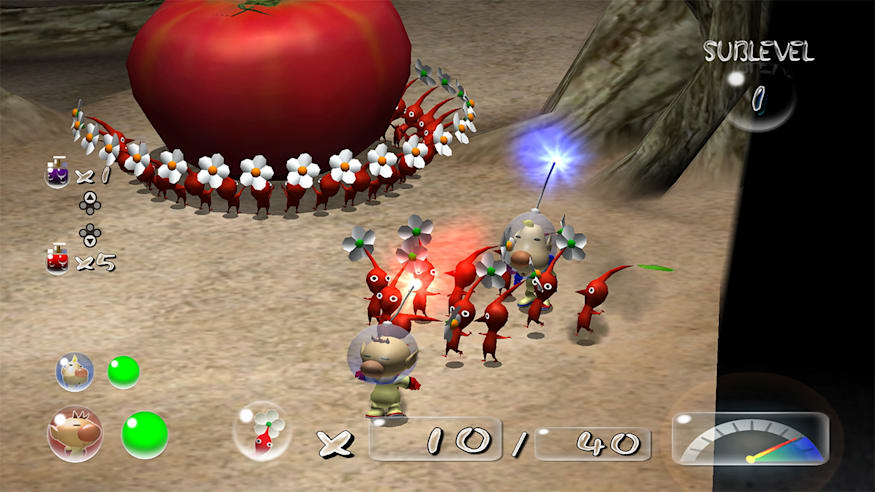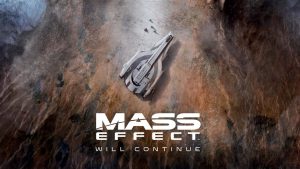
Pikmin might not be among Nintendo’s biggest and most prominent properties, but this weird little RTS series has still accrued a sizeable fanbase over the years, one that absolutely adores the series and all of its charming eccentricities. Of course, though the last few years have been hard on Pikmin fans, it looks like things are finally beginning to turn around- not just because the long-anticipated Pikmin 4 is around the corner, but also because Nintendo recently shadow dropped HD ports of the series’ original GameCube classics, Pikmin 1 and 2, for the Switch as well.
Whether you’re revisiting the original duo in preparation of the upcoming fourth instalment’s launch, or if you’re about to jump in for the first time so you an familiarize with the franchise, these HD ports are very easy to recommend. The actual remastering job here is minimal, which is a bit disappointing, but the timeless qualities of Pikmin 1 and 2 haven’t lost any of their charm, and playing both of these games is as weirdly addictive as it has ever been.
"The actual remastering job here is minimal, which is a bit disappointing, but the timeless qualities of Pikmin 1 and 2 haven’t lost any of their charm, and playing both of these games is as weirdly addictive as it has ever been."
As Nintendo has often does over the years, it took a big, experimental swing with its first crack at the real-time strategy genre, and on top of that, did it for a console. But Pikmin is, of course, no ordinary RTS- rather than constructing buildings and building up armies to expand your empire, you pluck plants from the ground to make up an army of adorable plant-like critters, the eponymous Pikmin, and then issue them commands to gather items to bring them back to your ship. Sure, there’s a healthy dose of combat in there, but first and foremost, Pikmin is a game about exploring environments and collecting obstacles.
A core loop that sounds that mundane on paper shouldn’t work as well as it does in Pikmin games, and yet it does- for several reasons. One of them is the packaging that the games wrap this premise in. The environments you’re exploring are the colourful and vibrant remains of an Earth-like planet (which like is Earth, but that’s never officially confirmed), and the objects you’re collecting are the remnants of that planet’s inhabitants, from bottle caps and batteries to fruit and flowers. You and your army of Pikmin are all small, miniscule creatures, which means you’re vieweing these very human environments through the perspective of heroes who view them as large and sprawling.
The Pikmin games have a wonderful knack of looking at the mundane through the most curious of lenses, and everything they deliver through that lens ends up blossoming with an incredible amount of charm and child-like wonder. Seeing a rusty old tin can in the distance shouldn’t provoke excitement in you, and yet when you lay your eyes on it, you can’t wait to make your way over there and bring that worthless trinket back to your ship- because to you and your Pikmin, it’s immensely valuable. A paper bag shouldn’t be an obstacle that impedes your progress, and yet small as you are, it’s a veritable roadblock for you, one that you cannot get past unless you have the right Pikmin (and enough of them) in your small army. It’s been over two decades and three games since the inception of these ideas, but even now, they don’t feel played out in the slightest.
"Seeing a rusty old tin can in the distance shouldn’t provoke excitement in you, and yet when you lay your eyes on it, you can’t wait to make your way over there and bring that worthless trinket back to your ship- because to you and your Pikmin, it’s immensely valuable."
Pikmin 1 is, of course, the purest distillation of tha tgameplay loop. Like all other games in the series, it plays out from day to day, and with time limits in place (which – don’t worry – only sounds intimidating), tasks you, Captain Olimar, with gathering parts of your broken ship after a crash-landing from different environments. With Olimar’s life support only having 30 days of juice in it, your goal is to explore different parts of the planet, find all 30 parts of your ship, repair it in full, and rescue yourself. There’s a decent variety of environments on offer, each bringing with it new enemies to deal with, obstacles to surpass, and items to collect, while throughout your journey, you also meet and enlist the aid of three different kinds of Pikmin, each with their oqn unique abilities.
Pikmin 2 takes that formula and adds more complexity to it, as you’d expect from an ideal sequel. In addition to the returning Red, Blue, and Yellow Pikmin, the sequel also introduces White and Purple Pikmin. In addition to exploring various different environments, now, you can also explore multi-level caves to find treasures. And of course, with the central mission in Pikmin 2 being to gather enough treasures to pay off the crippling debt on your financially stricken employer, rather than a race against time in a self-rescue mission, there’s no overarching time limit. You still have until nighttime every day before having to return to your ship, but there’s no hard 30-day limit like there is in the original.
Both games stand the test of time wonderfully well. Not only is there something weirdly compelling and addictive about their core gameplay loop (more so in Pikmin 2, perhaps, thanks to its added complexity, especially with two characters now being playable rather than just one), they also control incredibly well. The New Play Controls from Pikmin 1 and 2‘s Wii ports have been used here as well, and just as it did back them, the control scheme works very well, especially given the kind of games these two are. Additionally, Nintendo has also applied controls similar to Pikmin 3 Deluxe, so even if you just want to play using sticks and buttons rather than motion controls, Pikmin 1 and 2’s controls are still incredible accessibly, intuitive, and easy to grasp.
"Pikmin 1 and 2 might be two decades old, but they’re still as fun as they were back when they first released."
If there’s one area where I’m a tad disappointed with these HD ports, it’s the actual porting quality. Both Pikmin 1 and 2 have received resolution bumps, in addition to some quality-of-life changes and polishing touches here and there, and both are now displayed in a widescreen resolution- but that’s pretty much it. If you were expecting something here on the same level as the mind-blowing Metroid Prime Remastered earlier this year (a game that released under similar circumstances), you’ll walk away disappointed with how conservative and low-effort these ports feel.
But then again, if all you want to do is play these games and enjoy their timeless charm, you can’t go wrong here. Pikmin 1 and 2 might be two decades old, but they’re still as fun as they were back when they first released. Timeless game design, intuitive controls, oodles of charm and personality, and an addictive gameplay loop come together to make for two of the weirdest and most oddly compelling real-time strategies games you’ll ever play. And with Pikmin 4 finally approaching is long-awaited launch, this is the perfect time to jump back into the series’ past and marvel at how well it holds up.
This game was reviewed on the Nintendo Switch.
Pikmin's design philosophies and core gameplay loop are timeless; Weirdly addictive; Excellent controls; Incredibly charming.
Minimal remastering efforts.


















